Cardiff City occupy 12th place in the EFL Championship after 22 matches, scoring 28 goals and conceding 27 goals, but showing great excellence in set-pieces, especially the attacking corner kicks.
Cardiff City, at the time of writing, are the top goalscorers from corner kicks in the EFL Championship with 10 goals, far ahead of its rivals, where six teams come in second place with half of this number, only five goals, namely Swansea City, Bristol City, Coventry City, Stoke City, Leicester City, Leeds United and Norwich City.
Not only is it amazing that some of these teams are far ahead of Cardiff City in the standings, but their reliance on corners is even more amazing. Corners represent nearly 36% of Cardiff City’s goals, where they scored 10 from corners out of a total of 28 goals. In contrast, at the top of the table, Leicester City’s percentage is around 12%, where they scored only five goals from corners out of a total of 41 goals. This indicates Cardiff City’s reliance on corners for scoring.
In this tactical analysis, we will discuss the reasons for Cardiff City’s superiority in attacking corners and their different tactics to highlight their players’ abilities in aerial duels for scoring, especially using stacks. We will also explain their use of short corners to surprise the opponent and achieve the principle of variation.
Excellent use of stacks
Using stacks is a characteristic sign for them, so you often see two players, at least, standing behind each other in their corner routines, which gives them many advantages against man markers, as we will explain in detail.
The first advantage we will discuss is that the attackers’ standing vertically close to each other makes it very difficult for the defenders to predict which direction each one will go, especially when the first one in the stack moves in a direction that attracts the attention of the defenders. Then, the attackers behind him go in another direction while he tries to block the defenders from reaching the other side towards his teammates, as in the case below.
In the first photo below, the targeted player is the third man in the stack, so let’s follow the process to free him. In the second photo, you see that the first player moves, at first, to the right side, trying to drag the defenders’ attention and then blocking anyone trying to go back. After that, the second and the third players of the stack move to the left side against only one defender, but the second moves first to drag this defender away to free the targeted player who will attack the area between the two zonal players coming from a good distance to run, then jump with a dynamic mismatch, as in the third and fourth photos.
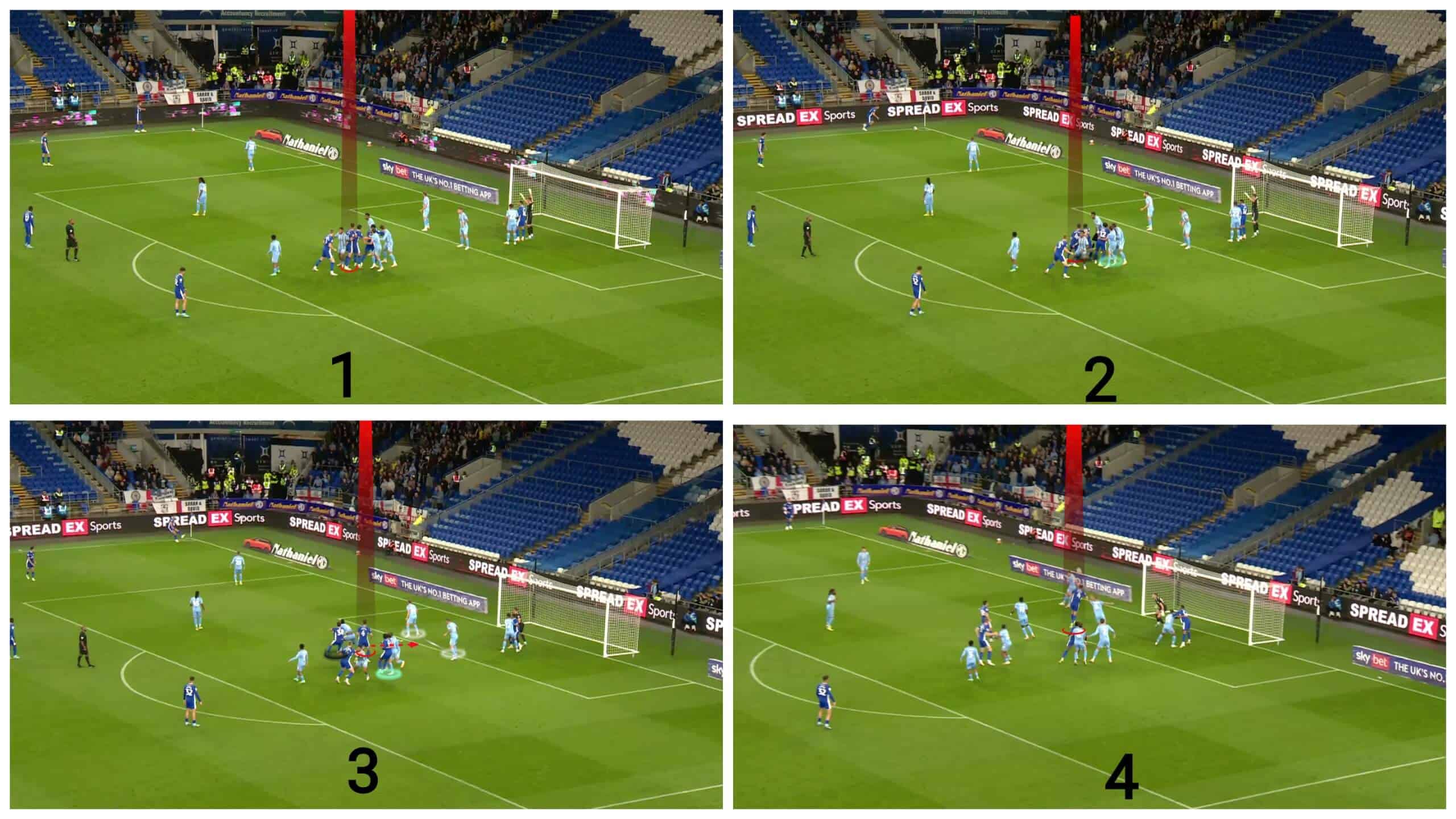
The result is a goal, as shown below.
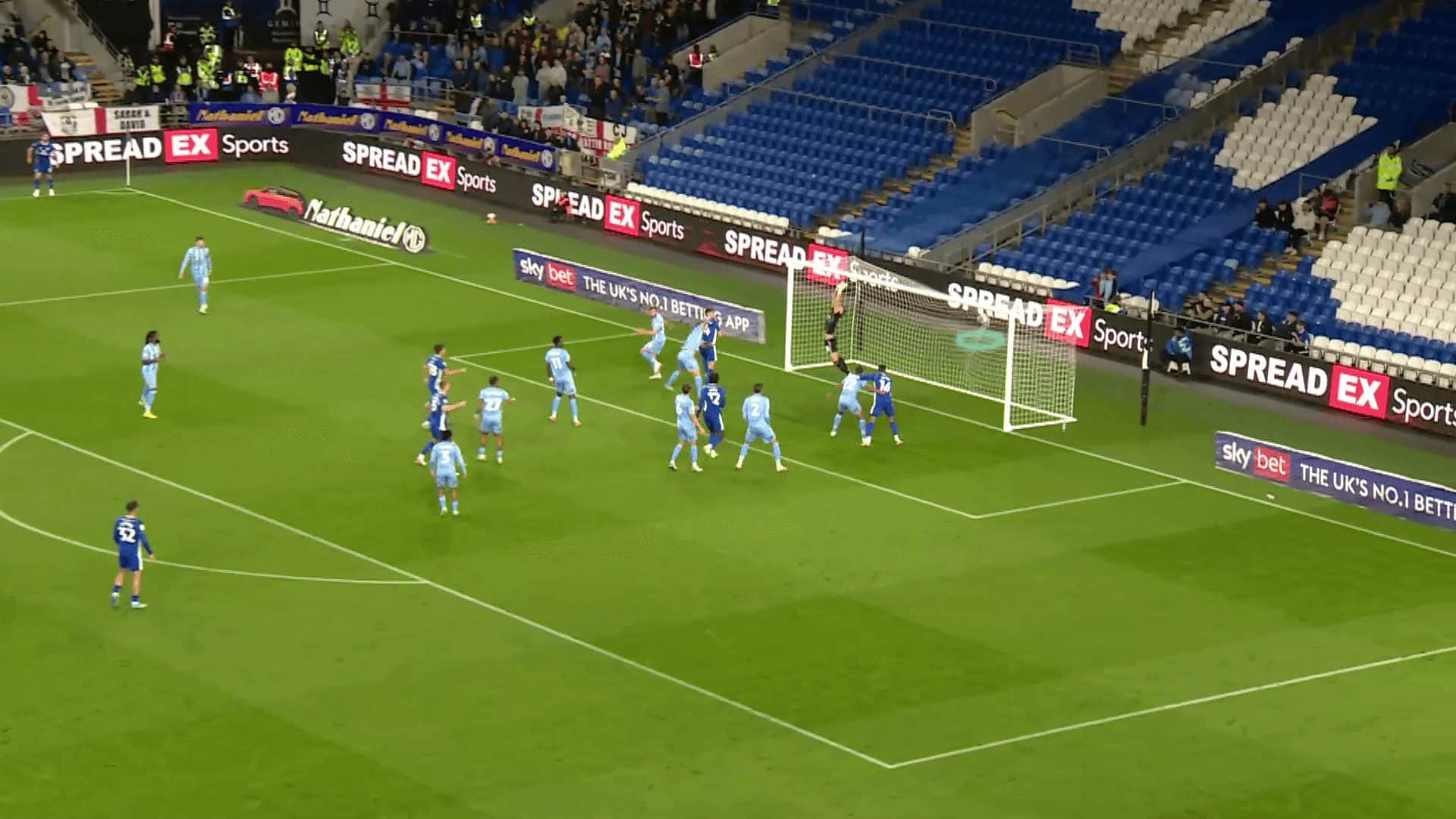
In this case below, you can see a stack of four attackers in the middle against a man-marking defending system, which leads to an ample free space on the two sides, so in the second photo, the first and third players move to the right side at first to drag defenders as much as they can and then the rest two attackers move to the left side in a 2-v-1 situation with their teammate’s block to prevent defenders from getting from the other side, so one attacker receives the ball. At the same time, another one stands on the far post, as shown in the third and fourth photos.
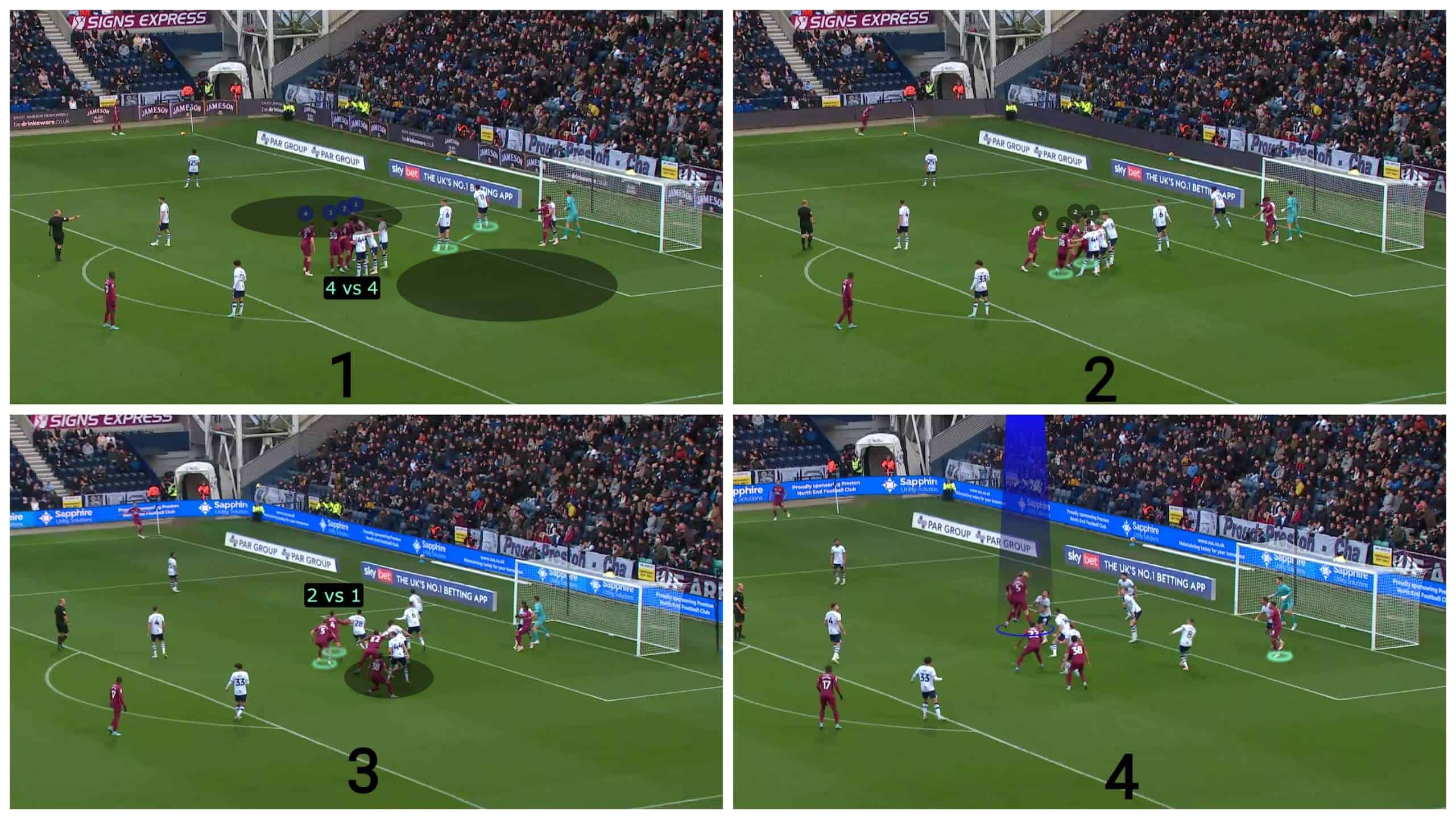
But the ball lands a little earlier, so a defender kicks it away, as shown below.
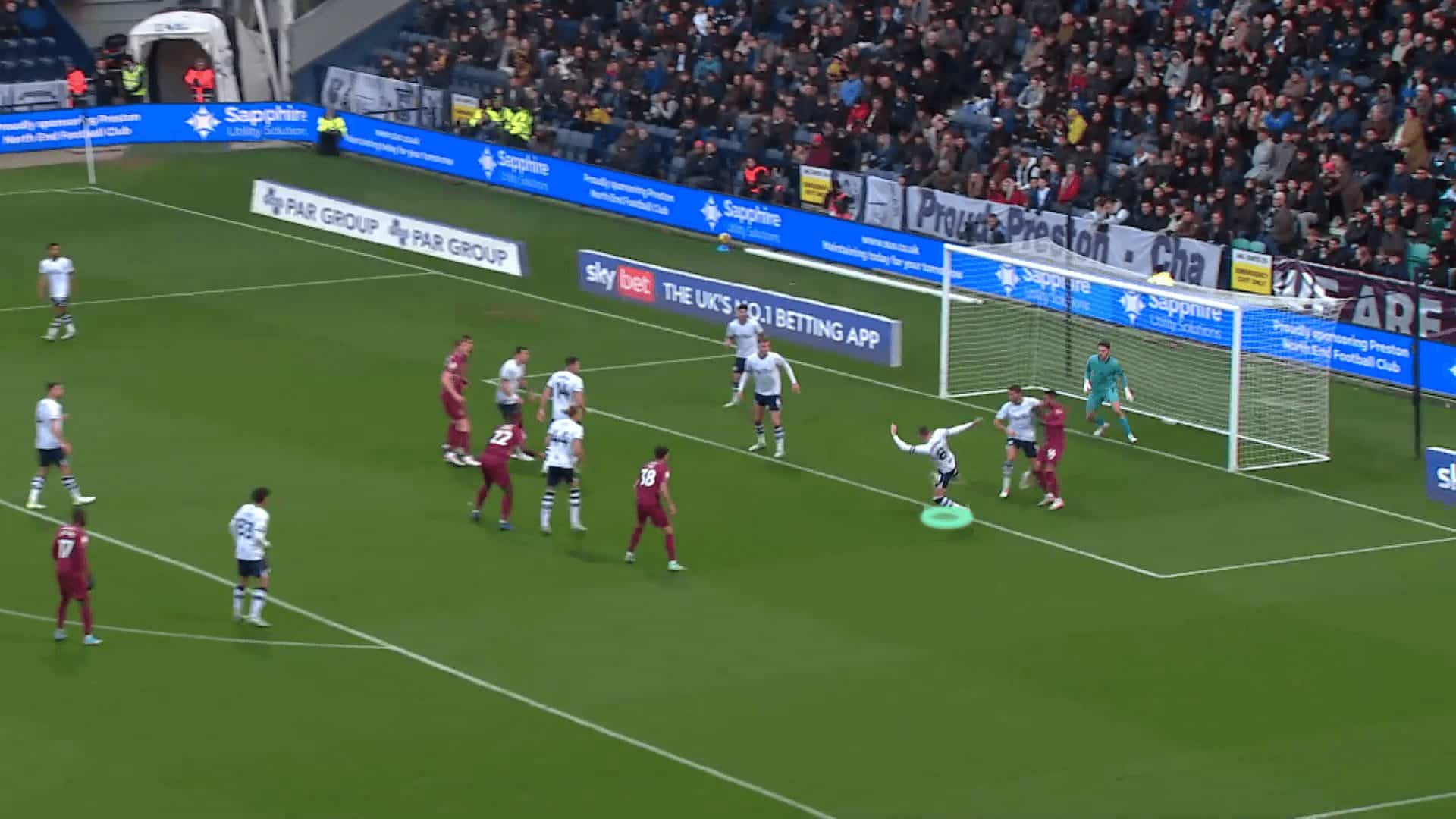
Using stacks doesn’t always lead to freeing a man or achieving numerical superiority. Still, it is also used to give your excellent attacker a chance to show his abilities in aerial duels by giving him only a second before his marker without physical touch, which annoys him to provide him with the time to run and jump, as in the case below.
In the first photo, you can see a two-player stack, while the second one is the targeted man. How will he become free? In the second photo, you can see the first player pushing the defenders to the right side by spreading his arms, so he gets two advantages from this action. The first one is taking their attention for a second, while the second one is to make the markers as far as he can so his teammate behind can take off, gaining a second on his marker, as shown in the third and fourth photos.
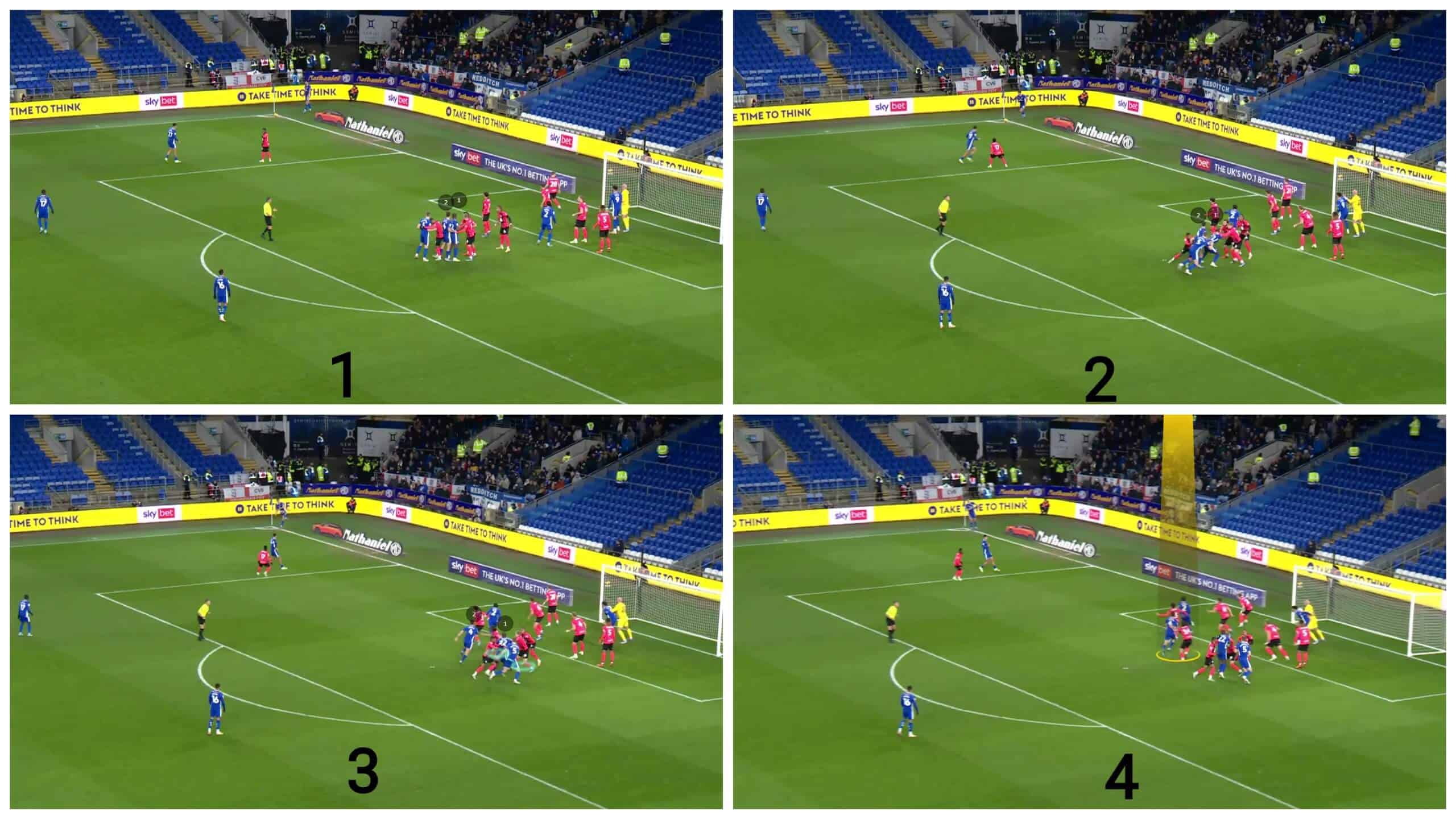
But what after getting rid of the marker against this hybrid system where there are four zone defenders and therefore one of the attackers, in white, launches to drag with him the second zonal defender to target the distance between the second and third zonal defenders by the free attacker, as shown in the first and second photos below.
At the same time, an attacker waits on the far post in the defender’s blind side because they are focusing on the ball, but the ball goes next to the post, as shown in the third and fourth photos below.
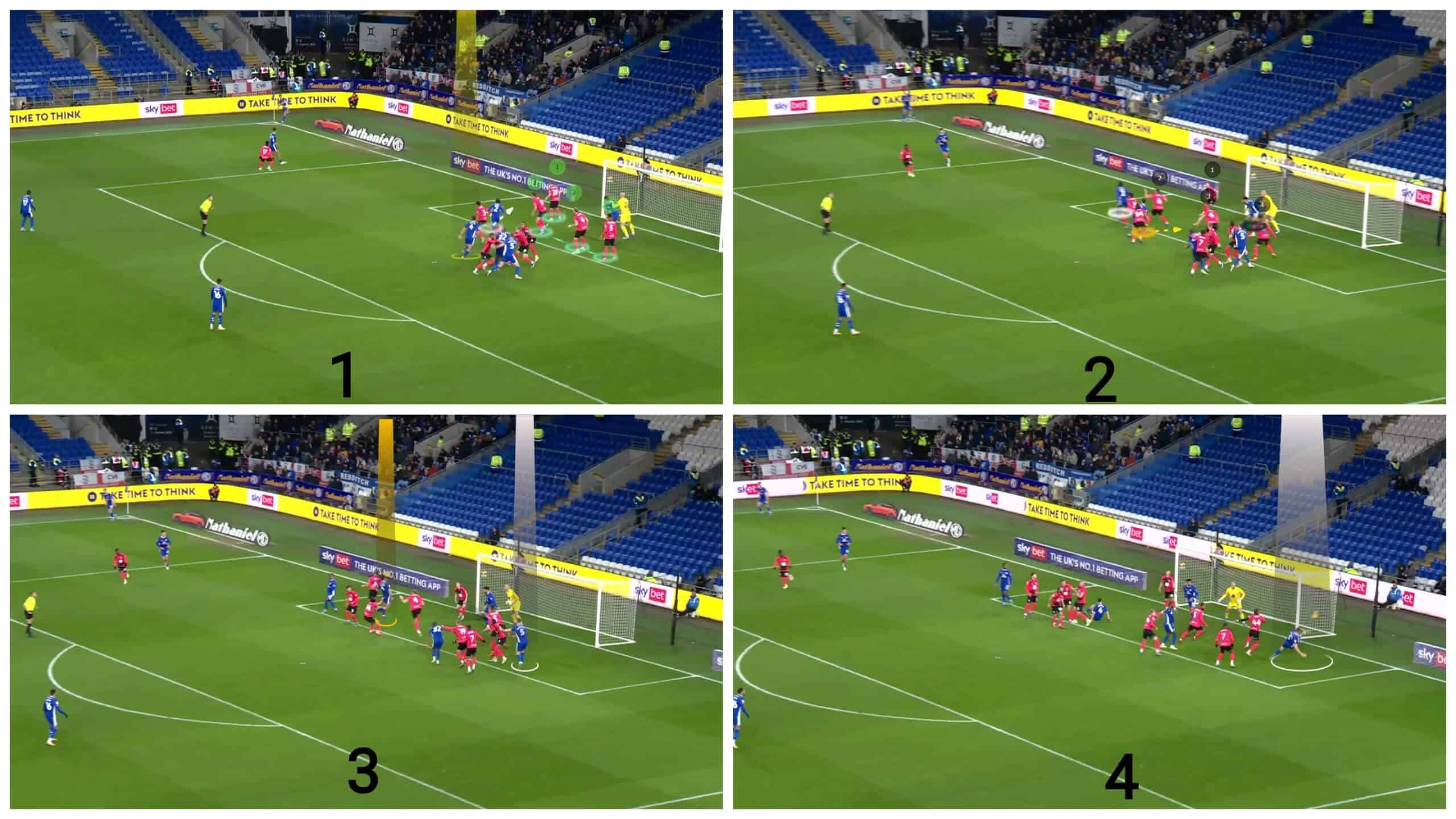
It is not only the numerical superiority and the dynamic mismatch that gives Cardiff City the superiority because of using stacks, but stacks can also cause an orientation problem for the defenders, as in the case below.
In the photo below, you can see a three-player stack. Let’s follow the process.

The first player goes to the right side, the second player moves to the left, and the third player moves to the middle, but every defender gets an attacker, as in the two photos below, so where is the problem?


In the first photo below, the taker has just kicked the ball while the defender watches him, but this small distance between them, because of the stack, makes him not stuck with the defender, so when the ball gets nearer, the defender should give a look to the ball, and this is the moment for the attacker to escape through his back because the defender can’t follow the ball and the attacker at the same time which is called a problem in orientation, as in the rest photos.
We should mention an assistant factor: using an outswinging cross so the ball comes from out to in, forcing the defender to have a closed body shape.
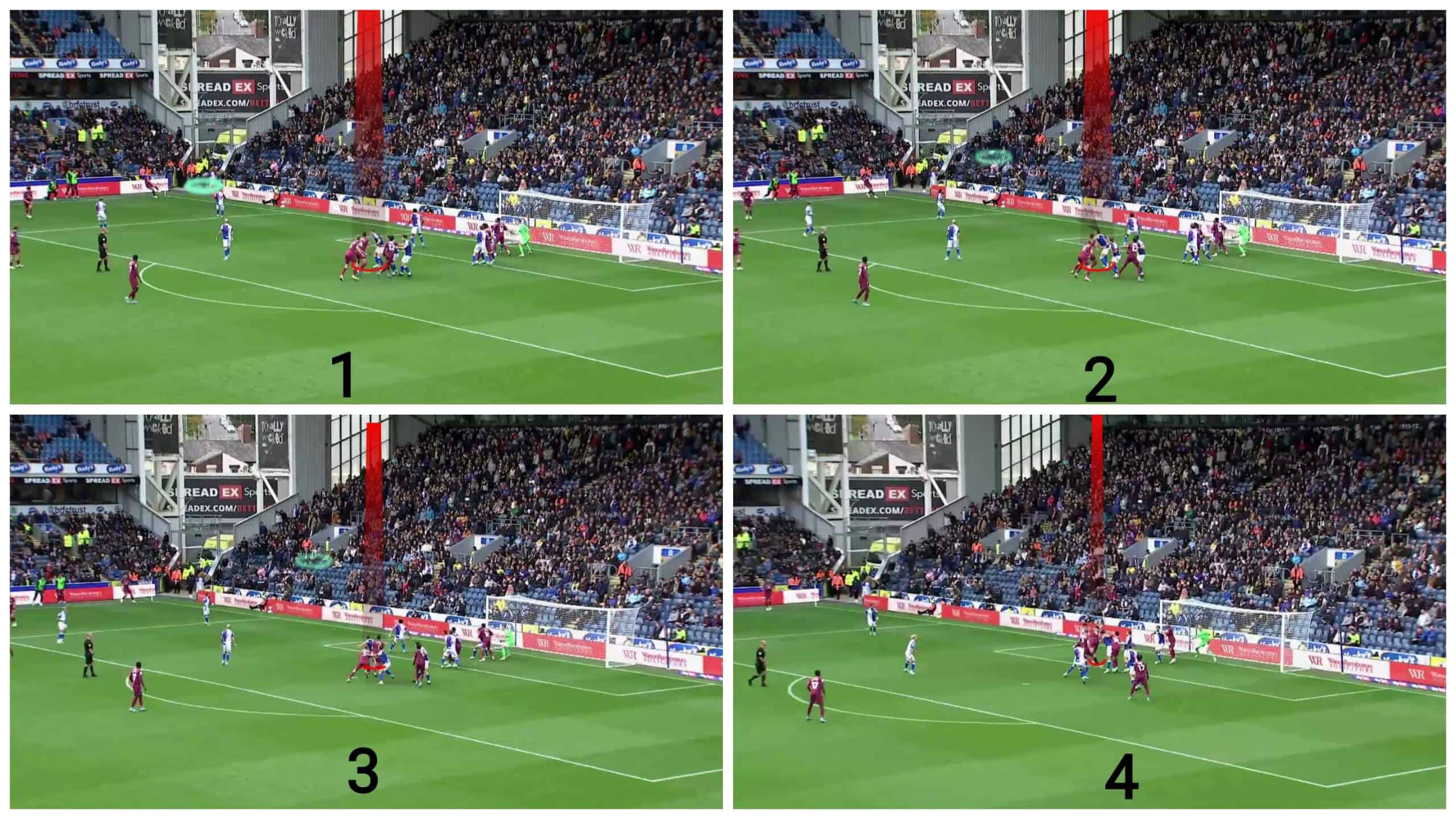
The result is a goal, as shown below.

They also have another idea to use stacks: using the first three players to block the defenders as a fence to free the space behind him for the fourth attacker, as in the case below.
In the first photo, you can see a four-player stack, but in the second photo, you can see the last player waiting in his space during the movements of the first three players. The first attacker goes to the near post, trying to attract defenders, while the second and third players block anyone trying to go to the free space behind them, as shown in the third photo.
In the fourth photo, the cross goes a little forward than supposed so that the attacker can get the ball, but with annoyance.
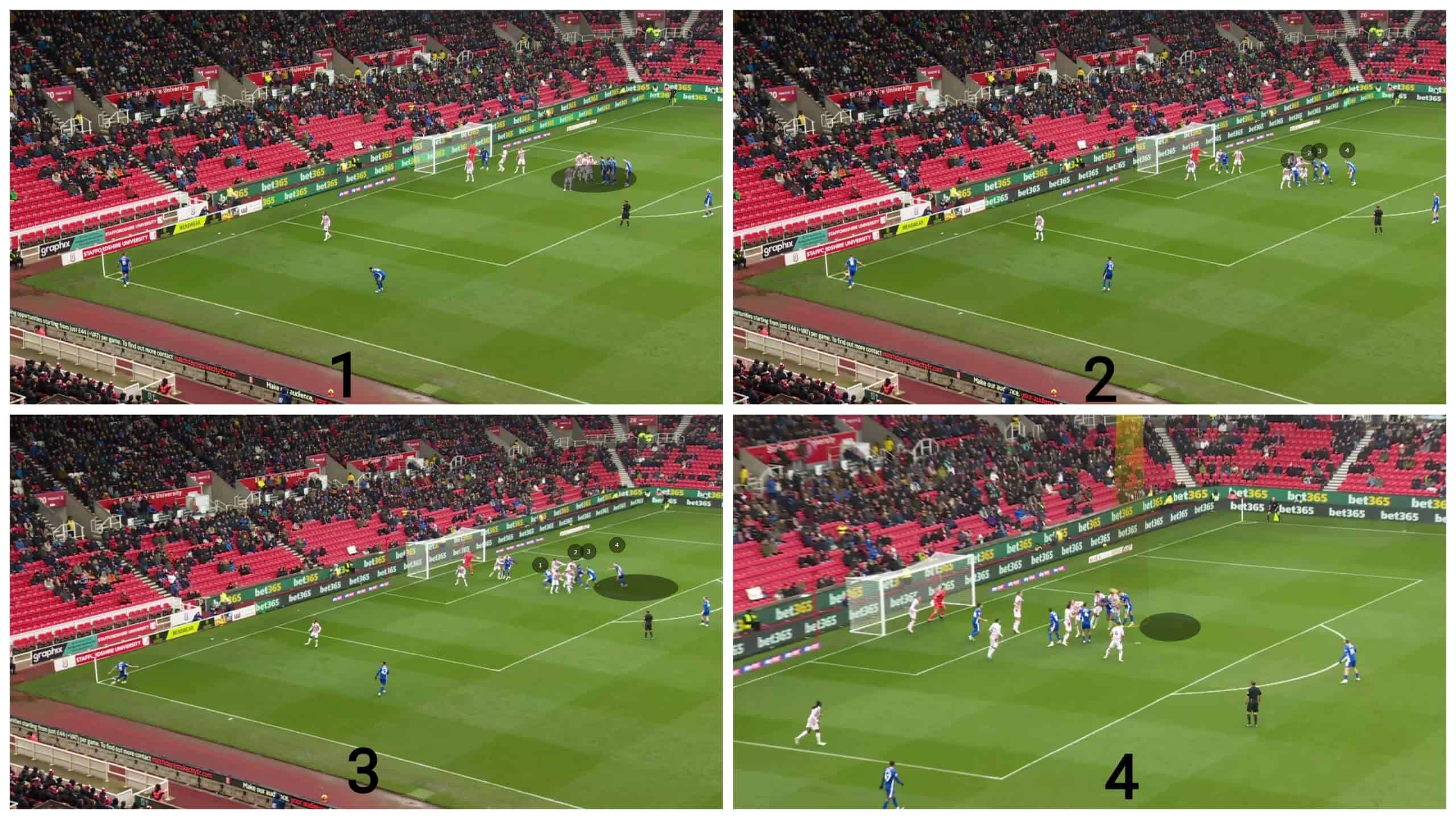
So, the ball goes easily to the goalkeeper, as shown below.
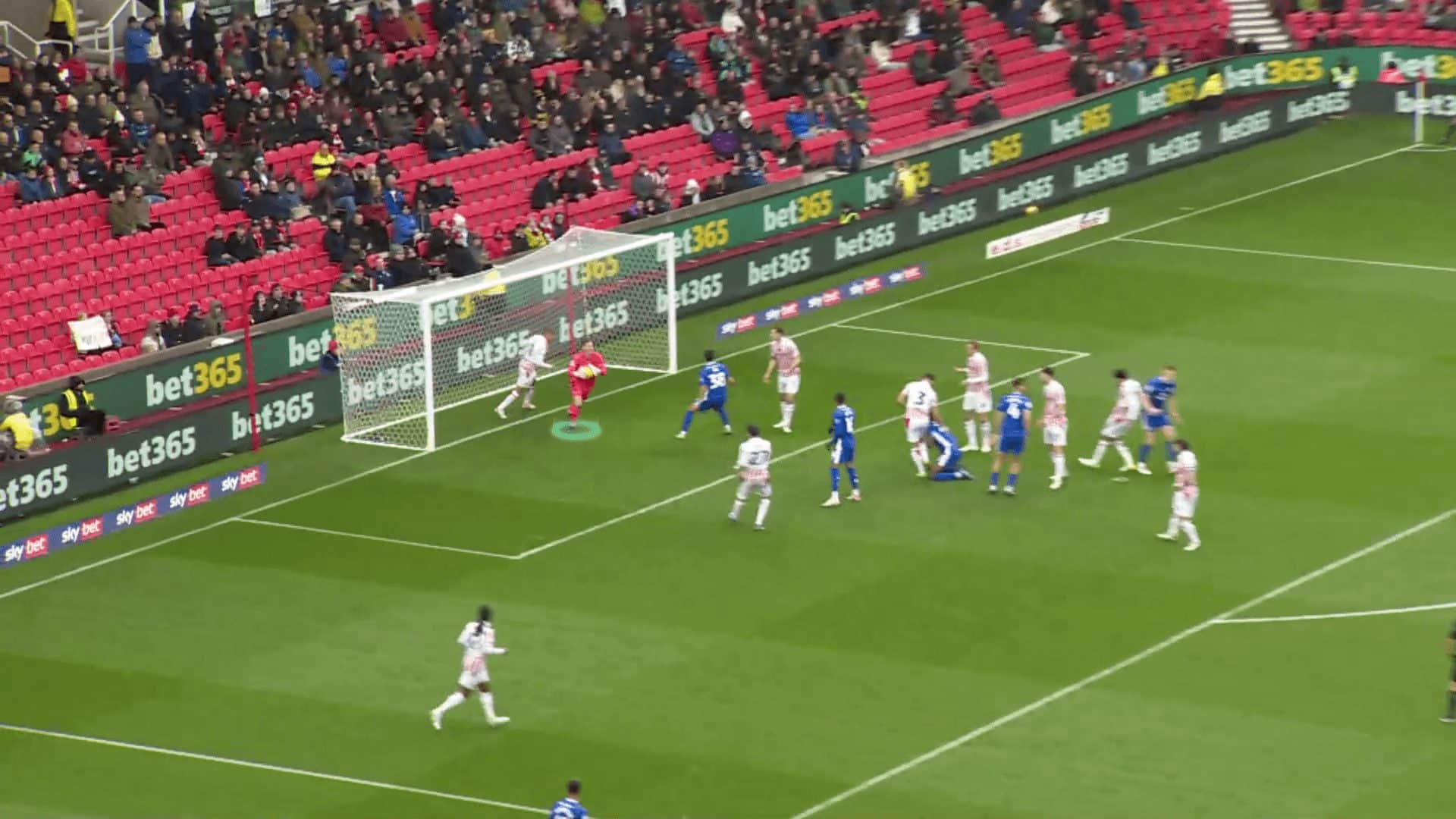
Short corners
As a variation, they sometimes use quick short corners to achieve numerical superiority at first by 2-v-1 or 3-v-2 situations and then crossing the ball to the far post, as in the case below.
In the first photo below, the short option goes quickly to the taker to receive the ball, then passes it back to him to pass it to the third attacker, who stands a little in the back, as in the first and second photos.
In the third photo, a late attacker comes from the back to the far post behind the last defender while the rest of the defenders focus on the ball and the rest of the attackers who move to the near post, so they have a 2-v-1 situation on the far post, as shown in the fourth photo.
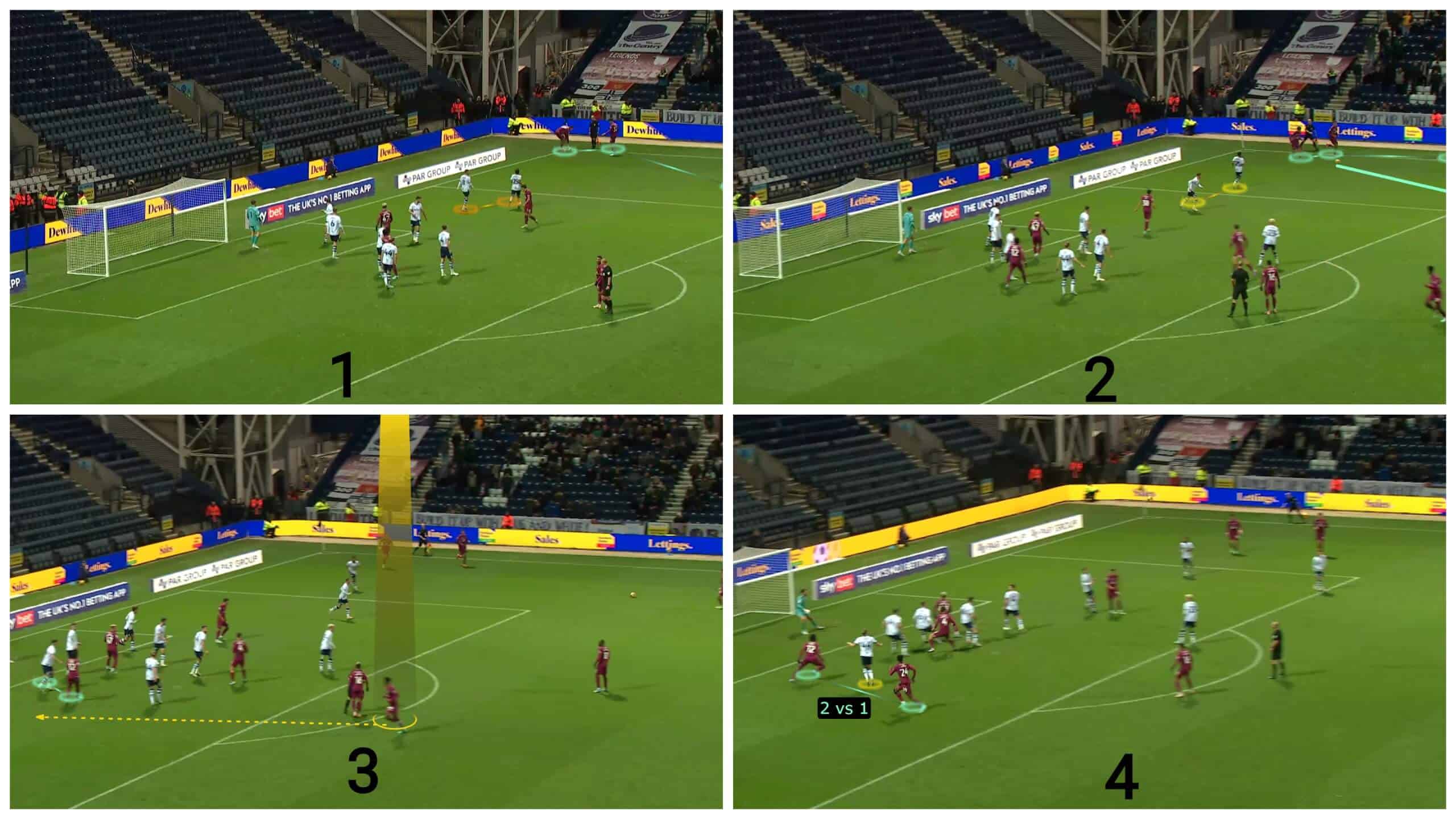
This late attacker drags the last defender’s attention, allowing the last attacker to get the ball freely, as shown below.
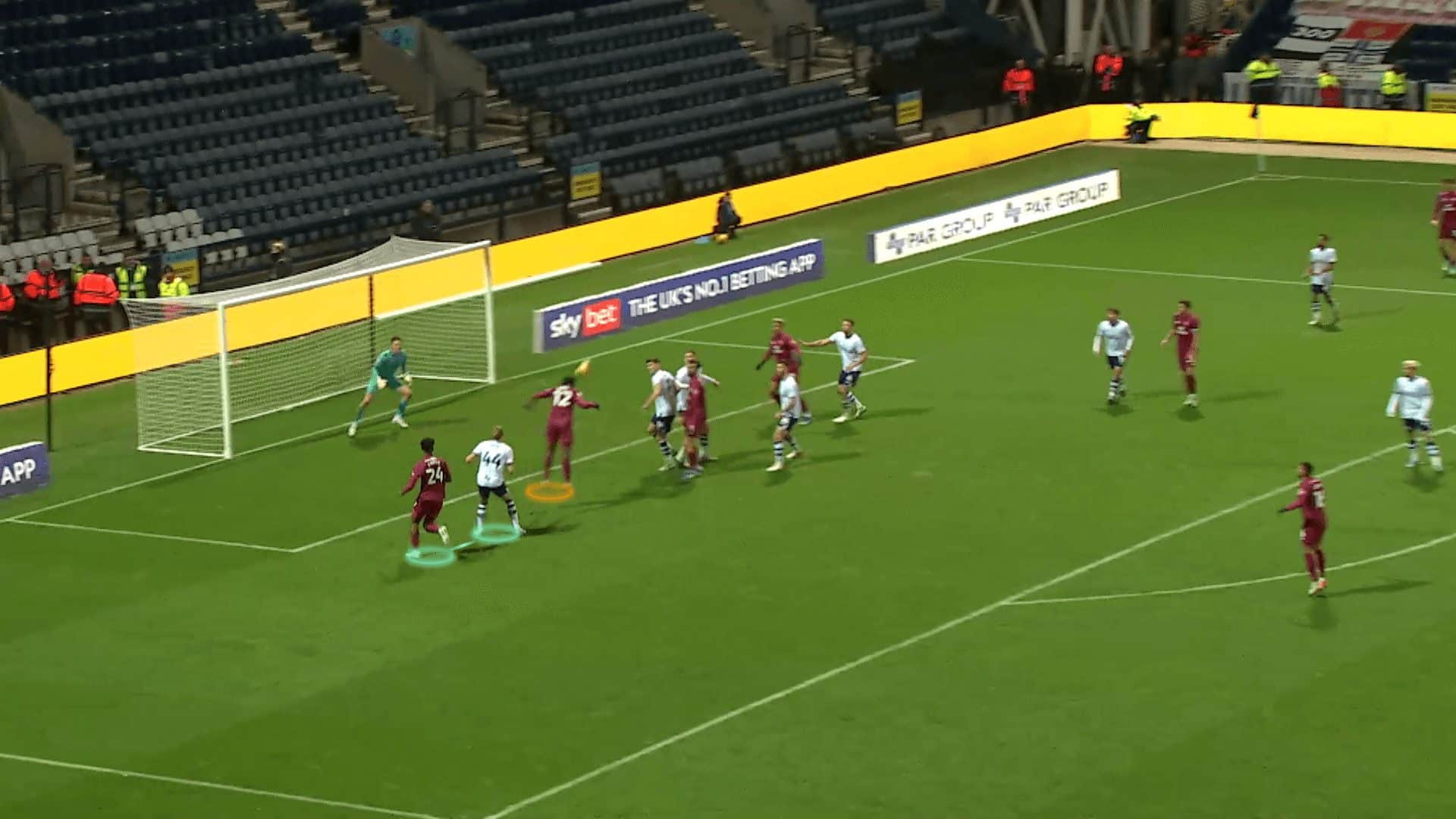
The result is a goal, as shown below.
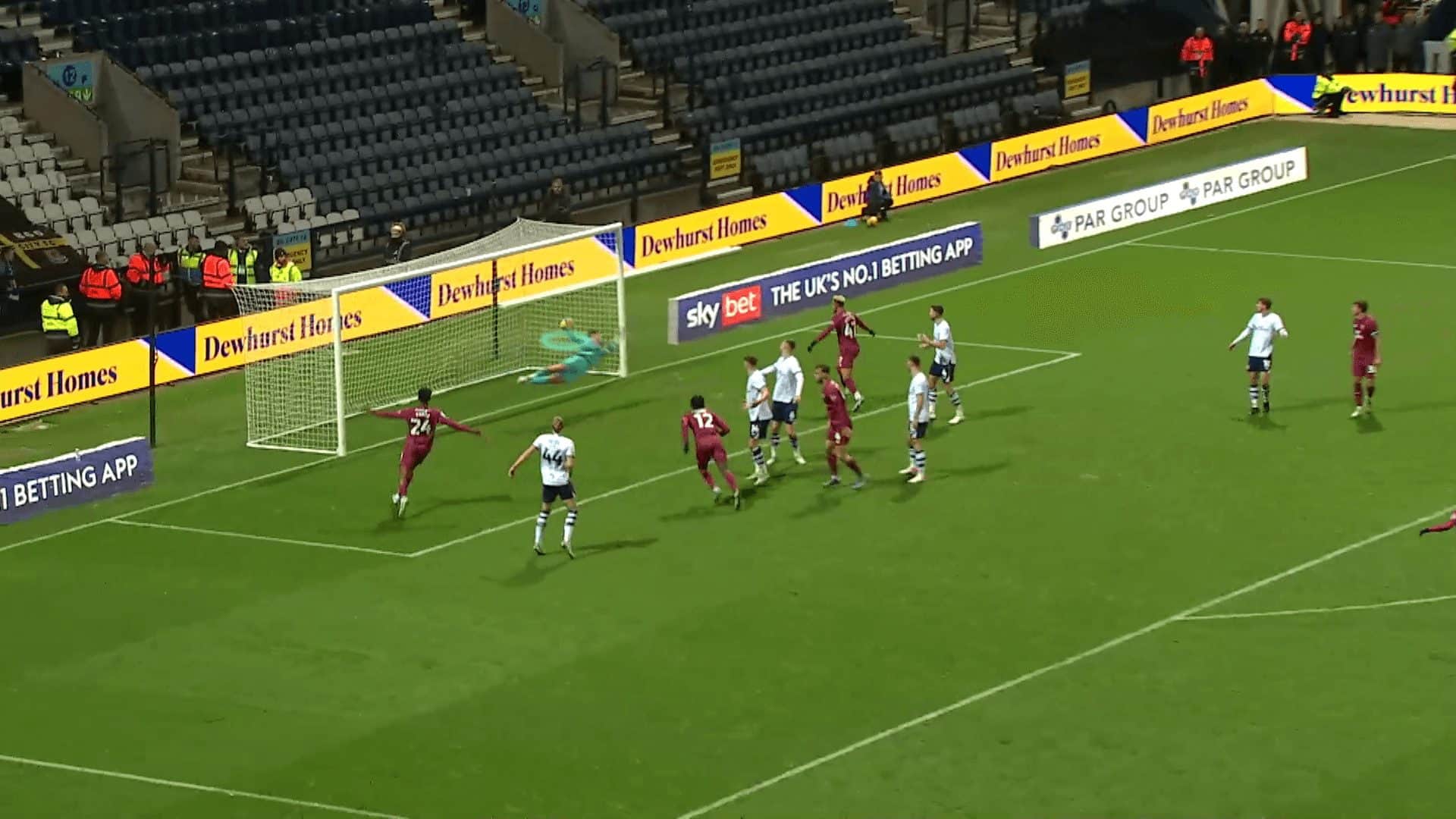
Conclusion
In this analysis, we have explained the reason for the great superiority of Cardiff City over its competitors in executing offensive corner kicks, which led to scoring 10 goals from corners, which is twice the number of goals scored by the teams that follow them, despite their significant advantage over them in the table.
In this set-piece analysis, we have demonstrated their excellence in exploiting stacks to give the attackers a dynamic mismatch against the defenders, escape from man-marking, and disperse the defenders in different ways. We have also explained their use of the principle of variation to surprise their opponent by using the option of short corners through numerical superiority at first and then sending crosses to the blind side of the defenders on the far post.

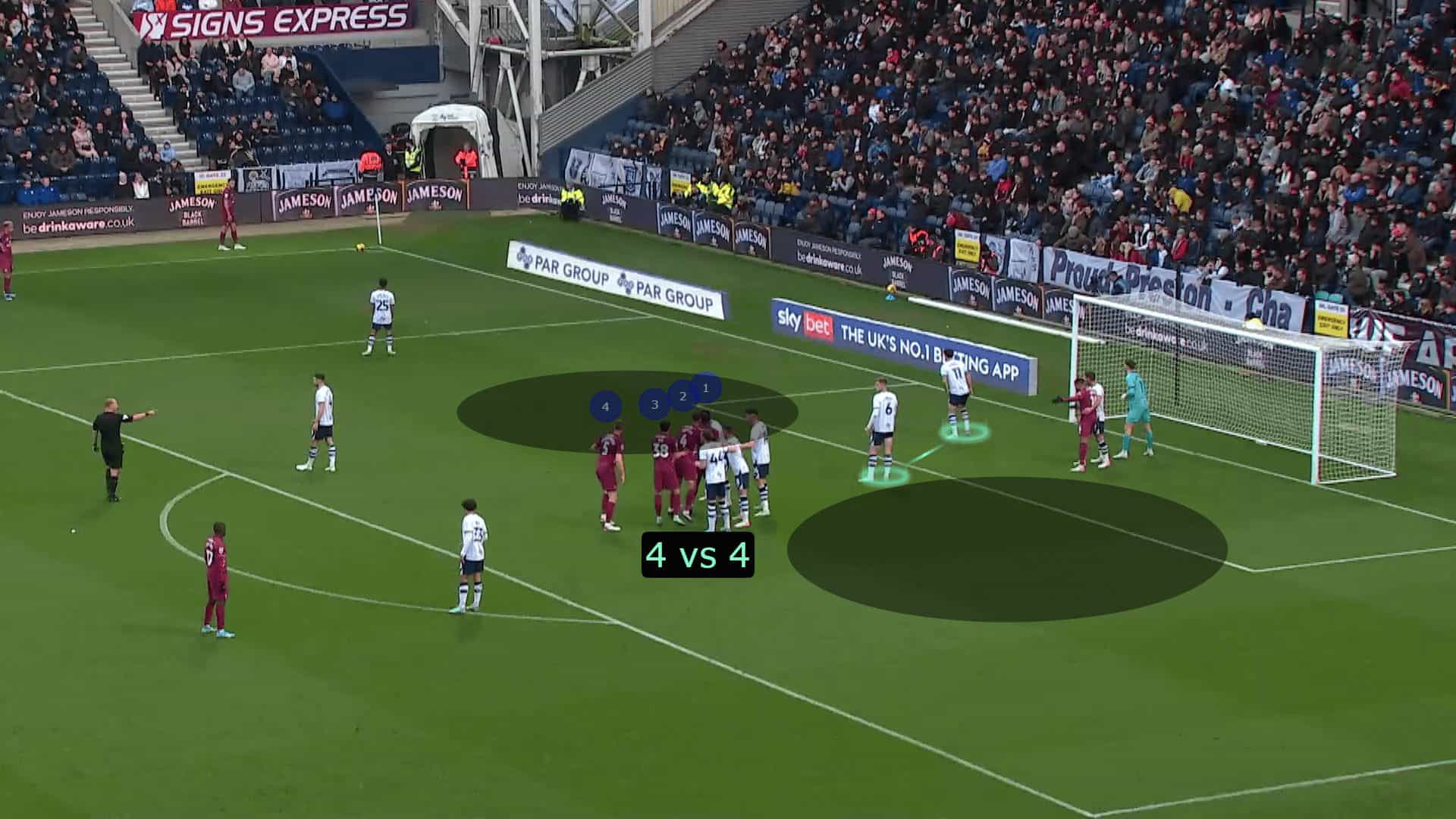




Comments